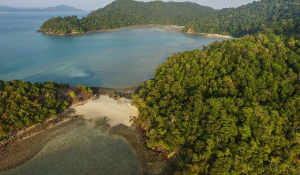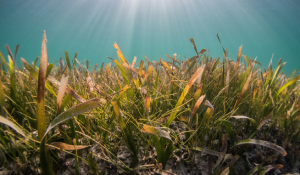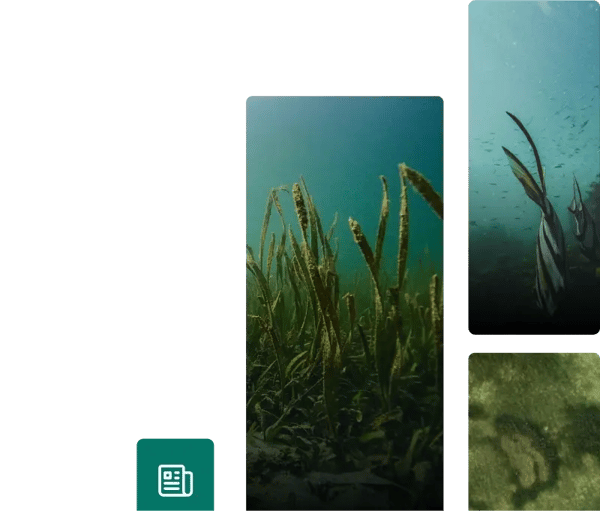Types of Property on which Mangroves Ecosystems Sit
The pressure to intensify climate actions has generated significant interest in Nature-based Solutions. Currently, many countries are implementing programs to reduce or sequester emissions through forest projects, such as; avoiding deforestation, afforestation, and reforestation, improved forestry practices, or restoration of coastal forests such as mangroves. These initiatives are partially or sometimes almost entirely funded through market instruments, bilateral agreements, or payment-for-results schemes.
Additionally, while developing "rules" for international emissions trading under Article 6 of the Paris Agreement is awaited, more countries and corporations are turning to voluntary markets and other "cooperative approaches" every day to contribute to their emission reduction goals and Net Zero Commitments.
Key Benefits and Considerations
In this context, it is crucial to understand who owns the land where the carbon projects are being implemented and carried out for the following reasons:
- Ownership clarity: Land tenure security ensures that property rights are explicitly defined and legally acknowledged. This is vital in order to identify who is eligible to directly benefit from the carbon credit sales.
- Conservation incentives: Landowners with secure land tenure rights over their properties are more inclined to engage in conservation-oriented projects.
- Access to financing: These projects often require initial funding for implementation, and having legally supported land tenure rights and responsibilities typically enhances the financing processes.
- Transparency and compliance: Clear land tenure facilitates project oversight and adherence to regulations. Well-defined rights contribute to meeting contractual and legal obligations.
- Community participation: These projects often ensure that local communities benefit fairly from generated income by providing legal assurance regarding the land.
Thus, various governments are in the process of legally recognizing about half of the world's community lands and territories. However, in places where land rights are recognized, carbon rights and tradable emission reductions are rarely explicitly defined. Since communities hold customary rights over at least half of the Earth's land surface, and consequently, a significant proportion of terrestrial carbon sinks, the lack of adequate recognition of their rights and their role in achieving global climate ambitions poses fundamental risks for communities, investors, and governments alike.
One specific type of project aimed at carbon sequestration involves coastal ecosystems, notably those associated with mangroves. These projects, also known as Blue Carbon initiatives, aim to conserve, restore, or sustainably manage mangroves to store atmospheric carbon in plant matter and soil, receiving credits equivalent to the amount of carbon sequestered. From a legal-administrative perspective, mangroves represent a complex and unstable area, challenging to define both in legal terms and from an environmental standpoint. There are two general viewpoints among different state administrations: for some, mangroves are considered wasteland or unclaimed land, open to free access; whereas for others, mangroves are highly valuable socio-ecosystems subject to a plurality of jurisdictions since each of their components falls under a different public authority. The boundaries between these components are sometimes difficult to define, and thus, better delineation would positively contribute to ensuring better mangrove management and the benefits they provide to communities enjoying various ecosystem services (ex. timber, NTFPs, carbon sequestration, biodiversity conservation, or coastal disaster mitigation).

Global Distribution and Legal Frameworks of Mangrove Ecosystems
Although mangrove forests are widely distributed across more than 120 tropical and subtropical countries and territories, they are rare globally, covering less than 1% of all tropical forests worldwide. According to a recent assessment, the global mangrove area in 2020 is estimated at 14.8 million hectares (FAO, 2023). The largest area is found in South and Southeast Asia (Indonesia 3.1 Mha, Malaysia 0.5 Mha), followed by South America (Brazil 0.9 Mha), West and Central Africa (Nigeria 0.6 Mha, Mozambique 0.3 Mha), North America, Central America (Mexico 0.7 Mha), and Oceania (Australia 0.9 Mha). 47% of the world's mangrove area is located in five countries (Indonesia, Brazil, Nigeria, Mexico, and Australia), and 63% is concentrated in just 10 countries (FAO, 2020). As one would expect, each of these countries has its own legal and land use management regulations. These differences and similarities must be understood and adjusted for each case to enable projects to enter international carbon markets.

Mangrove species distribution (Deltares, 2014)
Legal Frameworks Governing Mangrove Ecosystems: Case Studies from Mozambique, Mexico, and Indonesia
Below is a brief explanation of the legal situation for the main countries where mangrove ecosystems are found in Africa (Mozambique), Central America (Mexico), and Asia (Indonesia):
Focus on Mozambique
In the case of Mozambique, mangrove land tenure can be complex, involving various stakeholders and regulations. Generally, land is considered state property, granting the government authority over its management and regulation, including mangrove forests. Additionally, there are traditional rights of local communities over land and natural resources, which can be legally recognized and protected. Furthermore, the government may grant concessions for the use and exploitation of mangroves to companies or individuals, subject to environmental regulations. In summary, mangrove land tenure in Mozambique involves the participation of the government, local communities, and other stakeholders.
Focus on Mexico
In Mexico, the Constitution establishes that all lands and waters within the national territory, including mangroves, are the property of the federal government. However, the administration and management of mangroves are often carried out at the state and local levels through specific governmental bodies, such as state environmental secretariats or the management authorities of protected natural areas. It is important to note that among countries hosting mangrove ecosystems, Mexico has specific laws for their protection, with the Ministry of Environment and Natural Resources and the National Forestry Council responsible for managing these areas. Additionally, a smaller portion of the mangroves forest in Mexico is owned by Ejidos. This is a system of communal land tenure that was created as a result of the Mexican Revolution where community-members hold clear land tenure rights.
For more information on the series of visits to various mangrove projects, check out Alessandra Souroujon's adventure in our blog post, "Mexico Visit: 3 Ecosystems, 12 Communities & 10 Days."
Focus on Indonesia
In Indonesia, mangroves, like most coastal lands, are owned by the state according to Indonesian law, granting the government authority to manage and regulate their use in the public interest. Despite state ownership, concessions for the development or exploitation of certain mangrove areas may be granted by the Indonesian government, allowing activities such as agriculture, aquaculture, forestry, or other economic purposes. Moreover, local communities in many rural areas of Indonesia hold traditional rights over land and natural resources, including mangroves, which may be formally recognized through decentralization laws or community-based natural resource management initiatives. The involvement of multiple state authorities can influence processes, with up to four ministries directly or indirectly involved in Indonesia: the Ministry of Environment and Forestry, the Ministry of Maritime Affairs and Fisheries, the Ministry of Home Affairs, and the National Land Office, with the former having primary authority over mangrove management regulation.
The implementation and success of mangrove-based carbon sequestration projects depend significantly on the legal and administrative frameworks governing land tenure in the regions where these ecosystems are located. In countries like Mozambique, Mexico, and Indonesia, the legal situation varies widely, involving state ownership, traditional community rights, and specific regulatory bodies responsible for mangrove management. Clarity in land tenure is essential for securing financing, ensuring transparency, and encouraging conservation efforts.
Recognizing and addressing these legal complexities can enhance the effectiveness of mangrove restoration initiatives, contributing to global carbon sequestration goals and providing valuable ecosystem services to local communities. As nations continue to integrate nature-based solutions into their climate strategies, understanding and harmonizing these land tenure issues will be crucial for the sustainability and success of Blue Carbon projects.
Feel free to contact us if you're interested in participating in any of these projects or if you'd like to gain further insight. By investing in the carbon credits produced by these initiatives, you're guaranteeing the execution of restoration and conservation efforts while enhancing the well-being of local communities.
Sources:
Adame M.F., Brown C.J, Bejarano M, Herrera-Silveira J.A., Ezcurra P, Boone-Kauffman J, Birdsey R., 2018. The undervalued contribution of mangrove protection in Mexico to carbon emission targets.
Chevallier, R. et al., 2019. Marine and Coastal Ecosystem-based Adaptation for Enhanced Resilience in Southern Africa: Synthesis Report, South African Institute of International Affairs (SAIIA). South Africa.
FAO. 2023. The world’s mangroves 2000–2020. Rome.
Giri, C., Ochieng, E., Tieszen, L.L., Zhu, Z., Singh, A., Loveland, T., Masek, J. & Duke, N., 2011. Status and distribution of mangrove forests of the world using earth observation satellite data: status and distributions of global mangroves. Global Ecology and Biogeography, 20(1): 154–159.
Rotich, B., Mwangi, E. & Lawry, S., 2016. Where land meets the sea: a global review of the governance and tenure dimensions of coastal mangrove forests. Bogor, Indonesia: CIFOR; Washington, DC: USAID Tenure and Global Climate Change Program.
UNEP 2016. Blue Carbon Financing of Mangrove Conservation in the Abidjan Convention Region: A Feasibility Study. United Nations Environment Programme, Abidjan Convention Secretariat and GRID-Arendal, Nairobi, Abidjan and Arendal.
Common Q&As
There are various types of Blue Carbon policies and conservation initiatives, including; The United Nations Framework Convention on Climate Change, The Convention on Biological Diversity, and more. For a deeper dive into this read our article: Blue Carbon Policy and Conservation Initiatives.
The significance of Blue Carbon projects lies in their capacity to combat climate change and their interconnectedness with the SDGs. SDGs, adopted by the United Nations in 2015, encompass a broad spectrum of social, economic, and environmental objectives aimed at achieving a sustainable and equitable future for all.
For more information, read our article: Blue Carbon and Sustainable Development Goals.
Blue Carbon ecosystems offer recreational and leisure opportunities that can drive tourism and stimulate economic growth in coastal regions. Mangrove forests, for example, attract tourists interested in birdwatching, kayaking, and nature photography. Similarly, seagrass meadows and coral reefs are popular destinations for snorkeling and scuba diving enthusiasts.
For more information, read our article: Understanding Blue Carbon & the Role of Mangroves in Carbon Sequestration.
Share this
You May Also Like
These Related Stories

Mexico Visit: 3 Ecosystems, 12 Communities & 10 Days

Understanding Blue Carbon & Mangroves' Role in Carbon Sequestration


